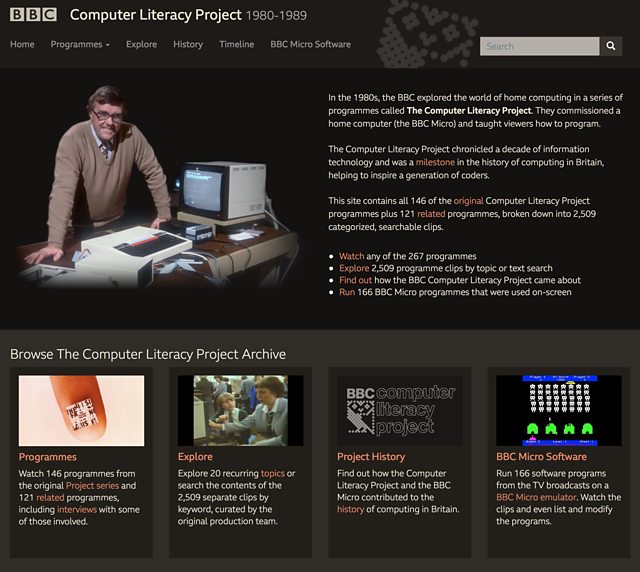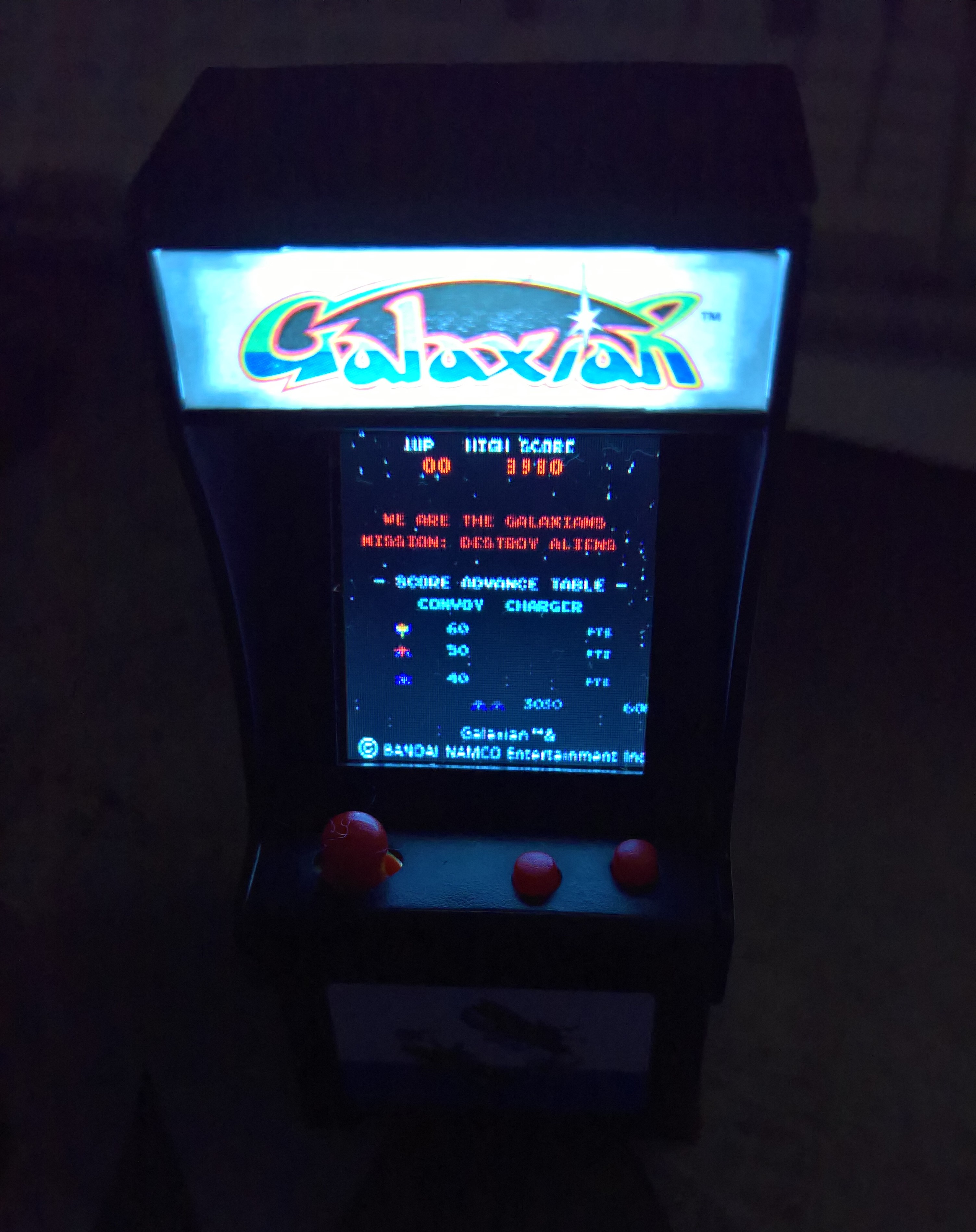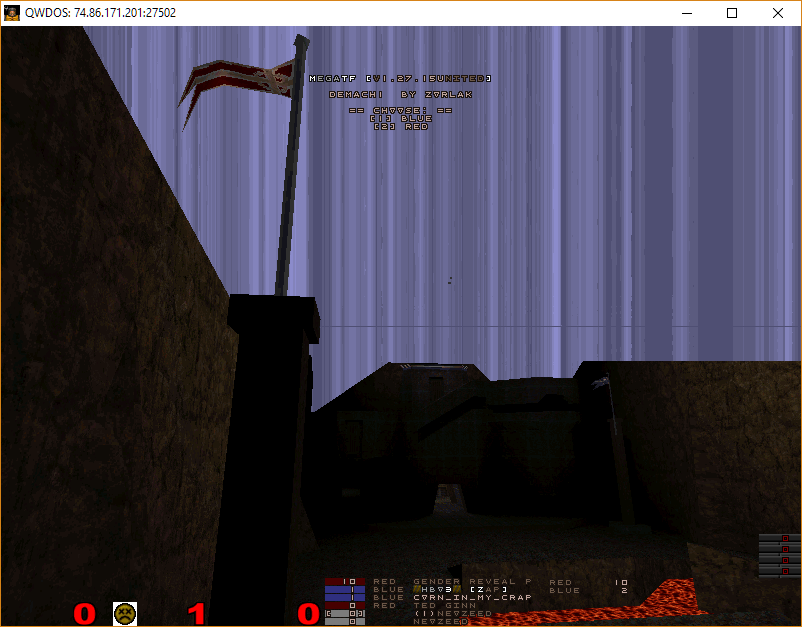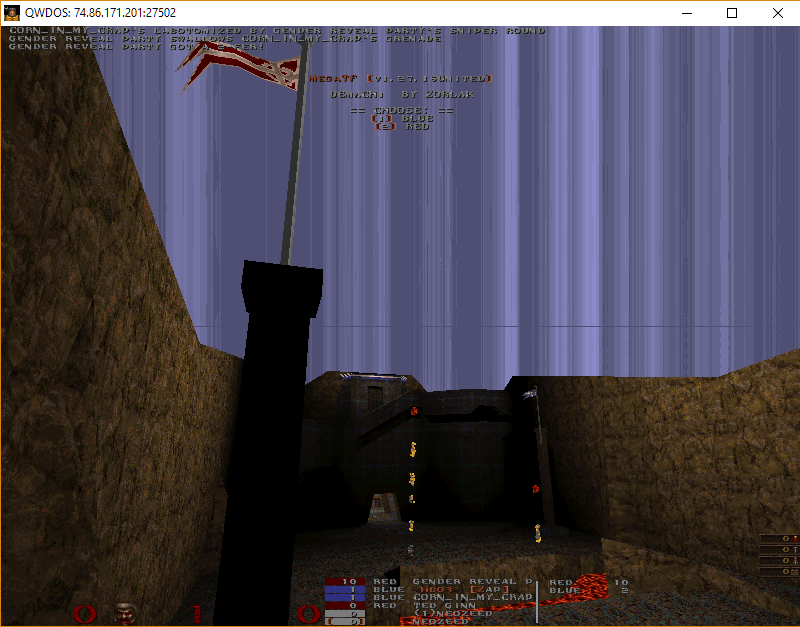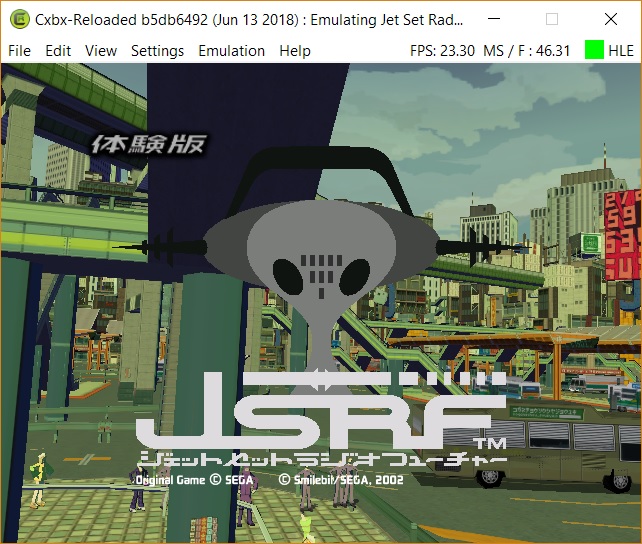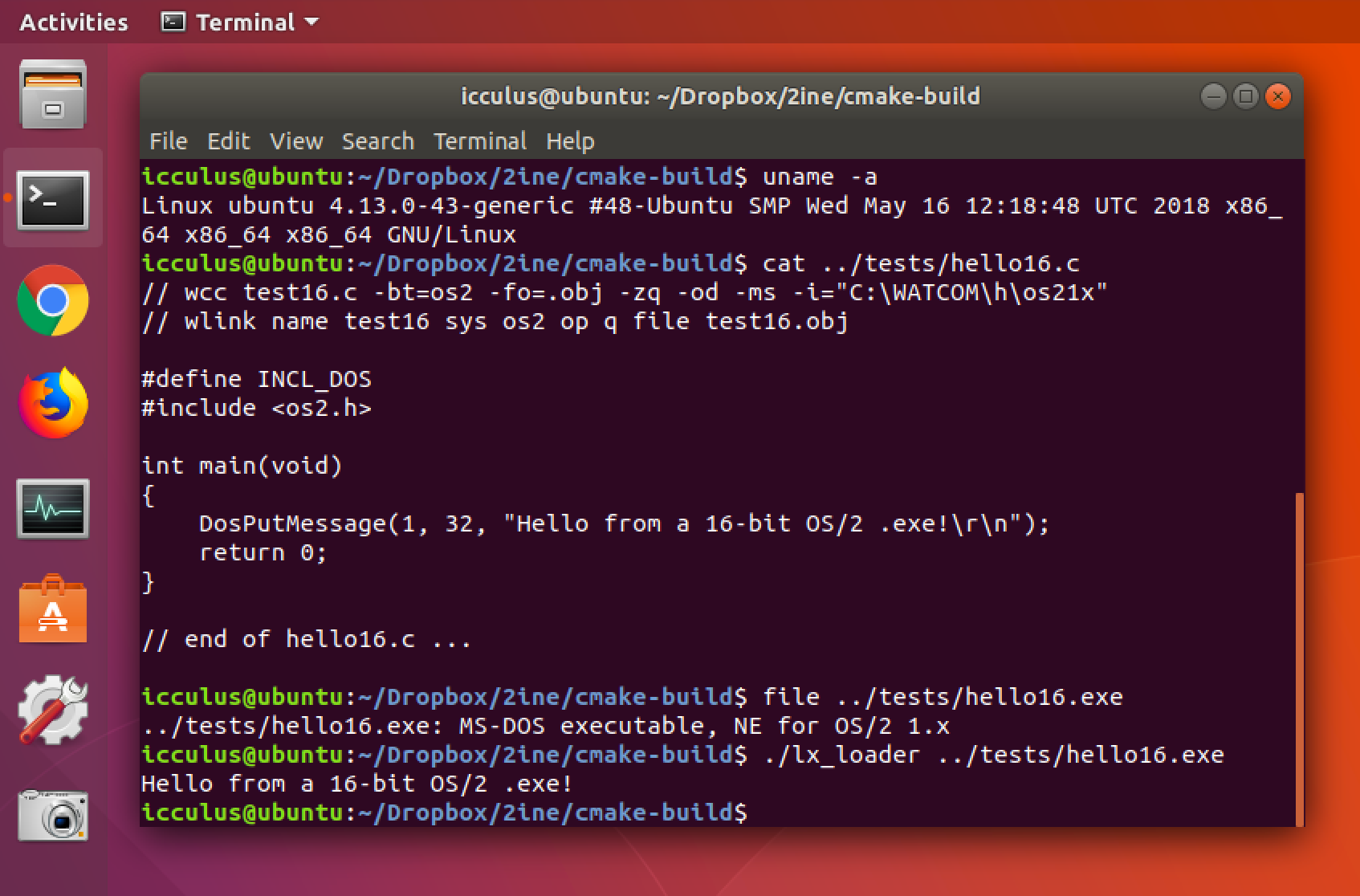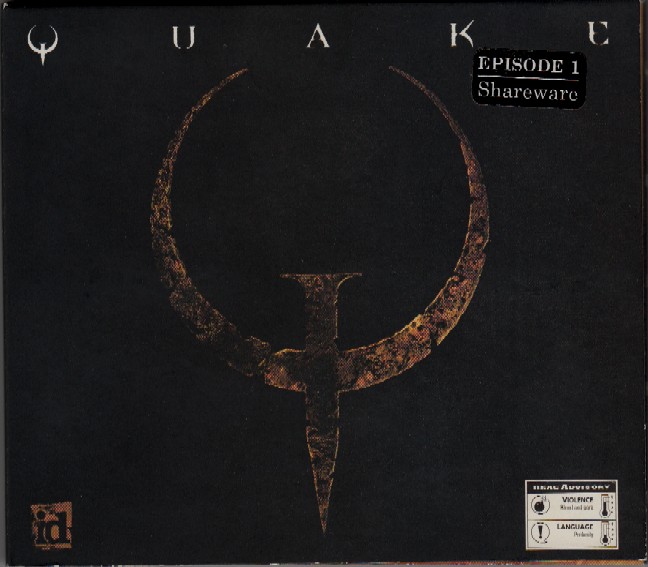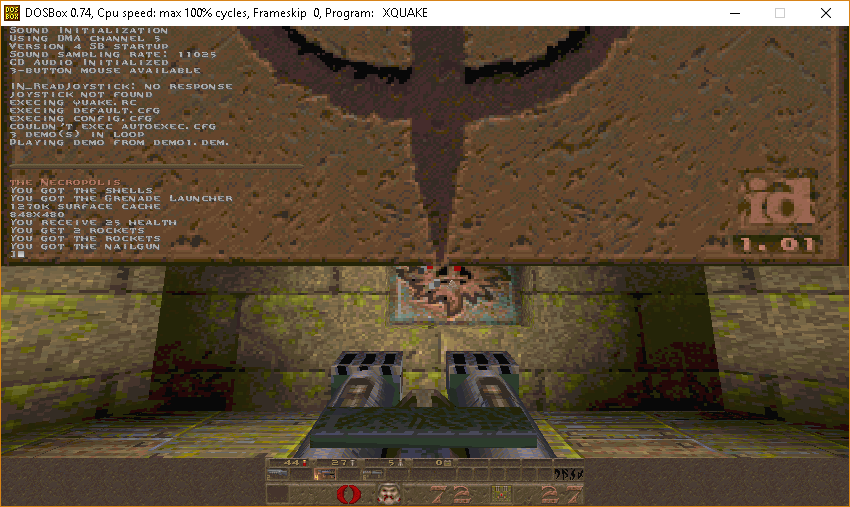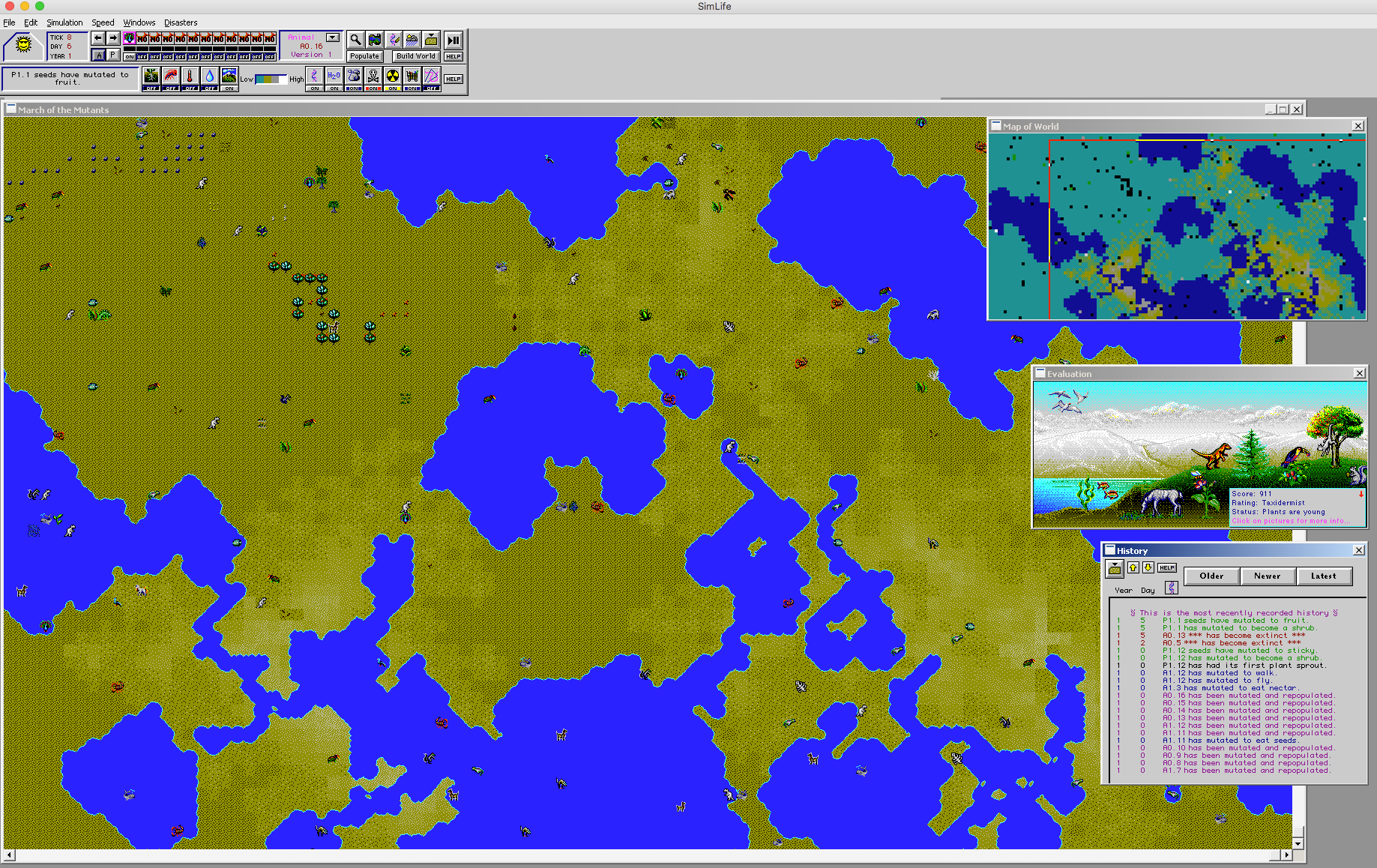
Sim Life on Crossover for OS X
Continuing in my eventual goal to get all the Maxis games (Sim City, Sim Earth) for Windows 3.0 I just acquired Sim Life.
Although the box that I have is the ‘Classics’ version, it actually does support Windows 3.0 as specified on the box. The requirements were again massive for the era, but pitiful for today requiring an 80386 processor, and 4MB of RAM, and a VGA display!
Unlike Sim City, the UI in Sim Life prevents you from moving MID child windows under the title bar, making playing on modern machines much more tolerable. My copy arrived with 3 low density 3 1/2″ diskettes, and a 204 page manual, making for a very hefty learning curve, along with a more involved experience then something casual, say Spore.
There is no doubt about how there is a great deal of overlap between Sim Earth and Sim Life, although the timescale is certainly more geared to life, unlike Sim Earth’s geological timescale, and even with these 3 programs it certainly feels like the save files should have been able to be transfered at some point, that the genesis of Spore is here with moving from geological to biological then to human lifetime scales. Although with so many things to change and get involved in, I really have to wonder if dumbing down Spore was the ‘right thing’ to do, to make it more accessible, however there is no doubt that the space portion of Spore was terrible with only a single ship to command, which made growing an empire of any size once the Grox has been encountered impossible.
Having a modern display does make the sense of the planet feel laughably small, but it’s a game, not a real life simulation, and as such expected to execute on 16Mhz machines. That said running on Crossover (Wine) on my Xeon it is incredibly snappy. One nice touch is that Sim Life is able to detect sound properly and it’ll run silently on Windows 3.0, but with 3.1 with configured audio & MIDI drivers, it’ll play (annoying) sounds, and the occasional MIDI track.
The included catalogue for this game didn’t have any prices so I don’t know what the retail price was at the time. And I have to admit, short of collecting old games for Windows 3.0 there is probably little value here compared to the far more relatable Sim City for Windows.
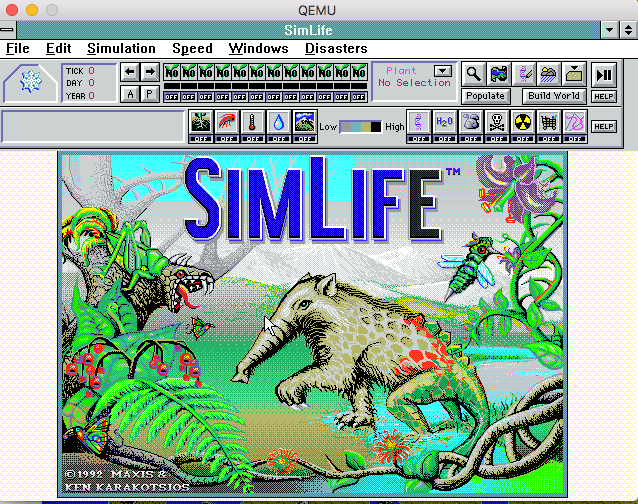
VGA display
Also it just goes to say that although it scales nicer for the UI on a VGA display, comparing my Apple Cinema display to VGA really makes for a claustrophobic experience.
Unless you are a diehard fan, I’d say that you’d get more out of the much flawed spore. Although if you want to see how incredibly more detailed the older games were, you’ll certainly love this one!
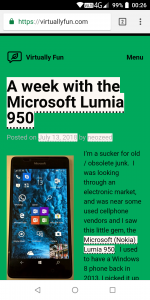 I saw this over on Hacker News, and thought that trying out the susty theme from sustywp.com might be worth trying.
I saw this over on Hacker News, and thought that trying out the susty theme from sustywp.com might be worth trying.


